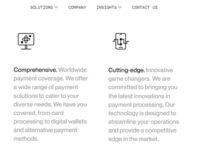Tips for Using Lasers to Engrave Soft Products

Engraving or marking on plastics, ceramics, glass, and other types of heat-resistant or soft materials can create a so-called catch-22. If someone opts for a more delicate method of marking to increase the quality of the mark, it may result in speed being sacrificed. For those who need more information about this, keep reading.
If someone has ever tried to mark one of the materials mentioned above using a diode-pumped, fiber, or CO2 laser, they have likely noticed subpar mark quality. These types of lasers will have longer wavelengths and they may not properly react when more sensitive materials are being used.
Achieving more precise marks requires the operator to use a laser with a shorter wavelength. However, these are not typically as powerful, which will result in lower speeds. This makes many people wonder what is the best method and laser to use for marking on soft products to ensure traceability and part identification? Is it possible to get the best of both worlds?
Whey to Use the 532 NM Wavelength Laser
If someone is using a soft material, the 532 nm wavelength green laser could be the best option. However, don’t run out and purchase one just yet. There are several considerations that will go into selecting the right laser marking technology along with the mark type, application, and material.
For example, a laser marking machine is categorized as an infrared product. These include diode-pumped, fiber, and CO2 technologies. Each of these can be used for creating permanent, high-quality marks on all types of materials, from plastics to metals. However, this same type of machine may alter or even burn the heat-sensitive materials. That’s because the energy from the laser won’t be completely absorbed, which will let excessive light pass through without marking this material.
This results in indecipherable logos, damaged parts, unreadable barcodes, none of which can be used for traceability or part identification along with the OEE or overall equipment effectiveness.
Why Will This Happen?
Lasers are concentrated light. Every material will absorb light energy in a unique manner. When the laser contacts the material, it changes the surface or, in some cases, the chemical makeup of the material. The way it changes is dependent on the type of laser application that is used.
One example is carbon migration, which takes place when metal alloys or metal is heated, which causes the metal to chemically bond with carbon molecules near or on the surface of the parts. That can create dark (sometimes black) permanent marks. Laser engraving or etching is a type of application that requires deeper laser marks to create longer-lasting logos, serial numbers, or barcodes.
Any experienced provider of laser marking equipment will ask plenty of questions about the requirements and processes to figure out what laser marking system is right for a customer. By knowing what to expect and consider, it is possible to find the laser cutter that best suits the needs of a person to ensure the desired results are achieved regardless of what the desired results may be.








